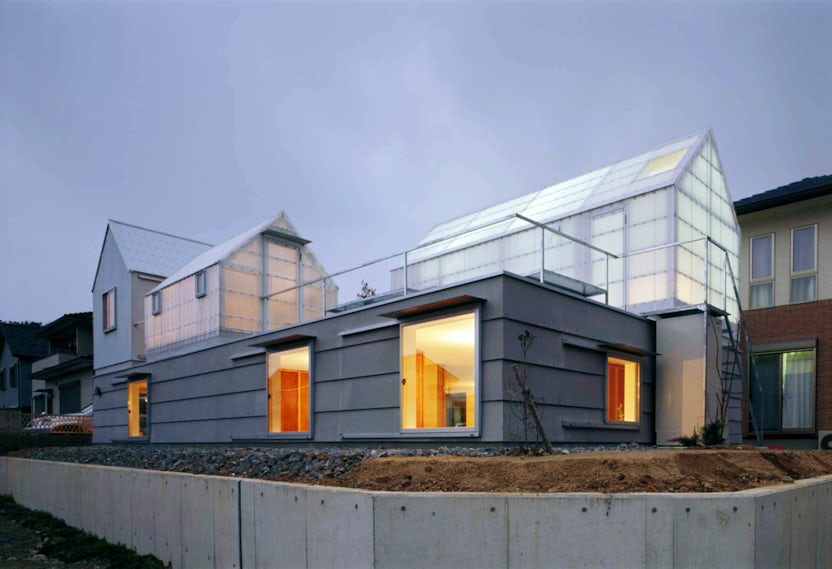Architizer is pleased to bring you a roundup of the latest architecture news and must-reads from around the web, as well as articles of interest to tide you over.

L to R: Coach House by John Smart; Sanderson House Extension by David Kohn; Bank of China by Urban Systems Office; Raven Loft by Geoff de Ruiter.
Architecture from All Over: This week sees some nice renovations in London — John Smart updates a Victorian manor while David Kohnchannels Loos — as well as Urban Systems Office’s “bundled building” proposal for Bank of China, a tower subtypology most recently seen in Heatherwick’s learning hub. Oh, and a tiny (habitable) treehouse.
Short-Circuiting Showrooming: Unless you’ve been living under a rock, you’ve caught wind of the commotion and commentary about the Apple Watch this week. Available to preorder as of this morning, the device marks not only their first foray into wearables but also a shift in retail strategy: Angela Ahrendts has reportedly discouraged queues at Apple Stores in the interest of managing customer expectations. (If you’re morbidly curious, here’s a slideshow of the 5th Ave flagship this morning.)
Context Clues: Incidentally, the Apple Store is among James Russell’s examples of “Placemaking,” the buzzy byword of contemporary urban planning and policy. In his latest essay, he unpacks the history of the term and its inflated hype factor with a rundown of examples, successful and otherwise. “Placelessness is so ubiquitous and such second nature that it is actually hard to think about what it takes to make a building or streetscape that’s appealing, that feels as if it belongs.”
In Brief
The Latest in the Paul Rudolph Saga: Lawyer Michael Sussman is championing Kaufman’s conversion scheme with a suit against Orange County’s partial-demolition plan.

L: Screenshot of SURREALISTa, via Kill Screen; R: Screenshot of “Sakura Dream” via Quartz
Eye Candy
Viz This: Virtual Surreality vs. Sakura Streetview: A new videogame lets you inhabit Giorgio de Chirico’s “metaphysical” environments — we’re just surprised that someone didn’t come up with it sooner. Meanwhile, Japanese beauty brand Lux has “hacked” Google Maps to bring the cherry blossom festival to your computer screen. It’s no Pac-Man, but sometimes it’s worth taking a moment to look at the world through the proverbial rose-colored glasses.
Merchandising Creep Never Looked This Good: While we’re on the subject of eyewear, Blake Kuwahara’s new collection of high-end sunglasses is named after starchitects — the $600+ specs loosely reflect the signature styles of Zaha, Ando, Corbu, et al. (there’s a Rey[ner]-Ban[ham] joke in there somewhere). For those of you looking for a more explicitly architectural accessory, Renzo Piano has collaborated with Max Mara on a handbag based on the façade of his new Whitney building (opening May 1st). At $1,500, it’s a far cry from, say, the Jeff Koons’ “art-should-be-for-everyone” H&M handbag, but if you absolutely must have a mashup souvenir, keep it simple with a DVF × High Line tote.

L: “Submarine Pits on Boca Chica Key,” via Sotheby’s; R: Image courtesy CSIS Asia Maritime Transparency Initiative / DigitalGlobe via Gizmodo
Point and Counterpoint
“Imagine All the Weird Opportunities Here”: Adjacent to Key West, the “Submarine Pits on Boca Chica Key” are a series of manmade docking pens that rake across a stretch of lush coral canal like Bridget Riley’s version of Smithson’s “Spiral Jetty.” Geoff Manaugh muses on the $21 million slice of semi-submerged real estate, citing Bjarke’s Danish Maritime Museum as a precedent.
Filling in the Details: But why bother with the seven 90-foot-long, 25-foot-deep water-pits when you can dredge up islands of your own design? Halfway around the world, China is making a land-grab of sorts at Mischief Reef in the South China Sea, dredging up sand to expand the surface in order to establish a remote yet strategically significant outpost.

“The BEACH” by Snarkitecture
Non Sequiturs
Speaking of Beaches, and Pits… : The National Building Museum has just announced that Snarkitecture will be installing a massive ball pit in the museum’s Great Hall this summer. An ocean of nearly one million translucent, recyclable plastic balls will serve as the ocean in the installation that the Brooklyn-based upstarts are calling “The BEACH.” (“Monochromatic beach chairs and umbrellas will sprinkle the 50-foot wide ‘shoreline,’ and the ‘ocean’ will culminate in a mirrored wall that creates a seemingly infinite reflected expanse.”) Sure, it’s been done, but we’ll forgo the snark and gladly dive right in.
IKEA’s Newest Product is Made from Chickpeas: A different kind of ball, of the edible variety, is currently rolling out at IKEA stores: The Swedish furniture company and sometime cafeteria made headlines this week with the launch of vegan meatballs. Developed in collaboration with PETA, Grönsaksbullar are made of chickpeas, green peas, carrots, kale, and corn, and are available now at select stores, with wider release to come (don’t sleep on it).
It’s Friday: … so here’s a tongue-in-cheek tour of Oscar Niemeyer’s Brasília, courtesy of Reggie Watts (via Curbed):
Image at top: Screenshot of “Sakura Dream” via Quartz









